We know the cheetah for its incredible speed (reaching 75km/h in the first two seconds and maxing out at around 110km/h at full pace); its perfectly round spots (that should not be confused with the leopard’s rosette markings); and those definitive tear marks framing its nose. We should all be aware by this point (seeing as recent events have shown South Africans to be very verbal about conservation of big cats), that cheetah numbers are approximated to be at a vulnerable 10 000 – 12 000 individuals throughout Africa. Certain subspecies have become extinct over the years, and the current population in Africa is decreasing due to three primary reasons: Human-wildlife conflict, whereby cheetahs are trapped and shot for predating on livestock; predation by lions; and cheetah’s own poor genetic variation.
Being at the bottom of a large carnivore hierarchy, cheetahs are threatened by a number of predators in the wild. Lions are their biggest enemy and will not hesitate to kill a cheetah upon confrontation. The same goes for cheetah cubs, whose mortality rate is astonishingly high at around 90%. Female cheetahs give birth to many litters of cubs throughout their lives, fathered by numerous males, to compensate for the frequent losses. As it is, male cheetahs have a low sperm count, and the genetic variation of this cat species is 10 – 10 000 times less than others due to a bottleneck and inbreeding of the population tens of thousands of years ago.
It is mightily impressive that, unlike other inbred cat populations like white lions and tigers, cheetahs are not prone to disease and illness. Cubs are born with no congenital or physical abnormalities. One could admire the female cheetah for her exceptional mothering skills, especially considering the forces against her. After a short gestation period of 90+ days, a litter of usually three to five cubs is born donning a hood of fluffy, grey fur, which is said to have developed through evolution to imitate a honey badger and keep predators at bay. These mewling babies are helpless, but their mothers are hyper-vigilant and will do just about anything to protect them and go to great lengths to teach their young to hunt successfully.
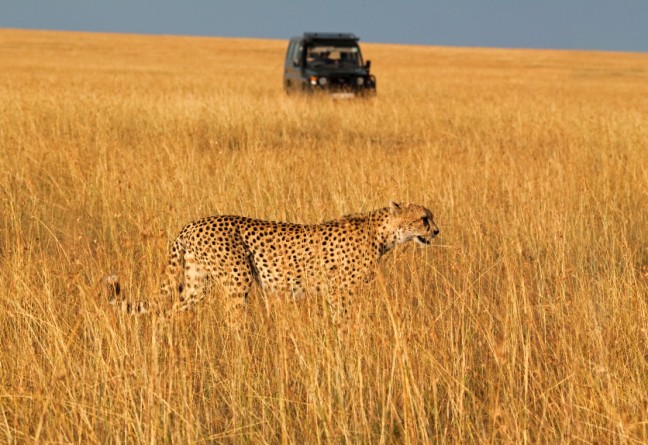
Female cheetahs are only accompanied by their cubs up until a certain age, otherwise they live a life of solitude and roam their wide home ranges alone. - iStock
Cheetah mothers know what a danger lions are and know that they must conceal the scent of her cubs. Should passing lions pick up the smell, cheetah mothers will risk their lives to try and chase the enemies, knowing full well that coming into contact with a lion would mean certain death. At a later stage of cubs’ lives, hunting lessons begin. Mother cheetah will demonstrate the stalk-and-chase and, sometimes, she will release her live prey, encouraging her children to practise catching a wounded target. Cubs will stay with their mother up until the age of 20 months, which is just about the age of maturity in males. Usually at around 18 months, the mother cheetah leaves her young, having prepared them to the best of her ability to survive as the underdogs (so to speak) in a lion’s world. The group of siblings will then remain together until the females wander off for a life of solitude, while males maintain a brotherly coalition.
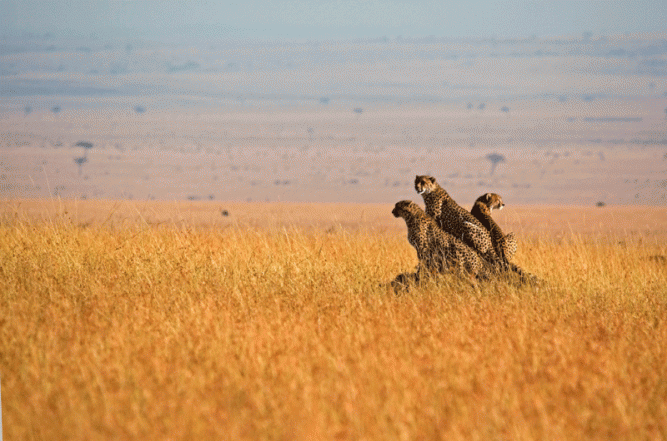
Cheetah coalitions are made up of males, usually siblings, who live and hunt together. - iStock
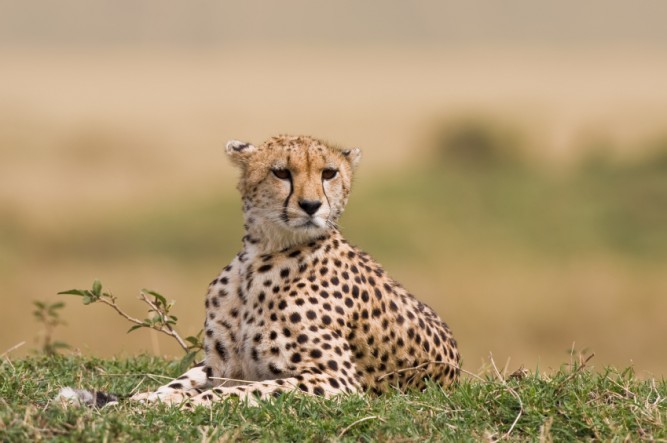
Cheetahs have smaller heads in comparison to their bodies, which makes them lighter and more streamlined. Males generally have larger heads than females, but otherwise it is difficult to determine male from female. - iStock
Typically, we picture cheetahs hunting smaller prey species in high speed chases on wide, open plains; but, as resilient and adaptable as this exceptional cat is, this is only typical of cheetahs that inhabit that environment. In regions of denser vegetation, the resident cheetahs have developed a more suitable hunting strategy that relies more on stalking than on speed. Being no match at all for a lion, a hyena, or a leopard, cheetahs have to be very wary when feeding on their prey. Unlike cheetahs themselves, these predators do scavenge, and snatching a freshly killed springbok from a cheetah is like taking candy from a baby. Without the strength and size of its enemies, a cheetah would rather abandon its hard-earned meal than fight for it, to avoid becoming, quite literally, cat food.
Designed specifically for speed and agility, cheetahs have extremely strong hind legs and long, tubular tails that act as rudders when they sprint. Their wide nasal passages lead to enlarged lungs, which assist in effective breathing, but reduce space in their mouths, giving them shorter jaws and smaller teeth. Their semi-retractable, dog-like claws enable these speedsters to gain traction on the ground, but make gripping and taking down an animal difficult. Instead, these slight predators rely on tripping up their victims and hooking the flesh using their dew claw, often leaving a visible tear in the shoulder of the prey, and making cheetah kills instantly recognisable.
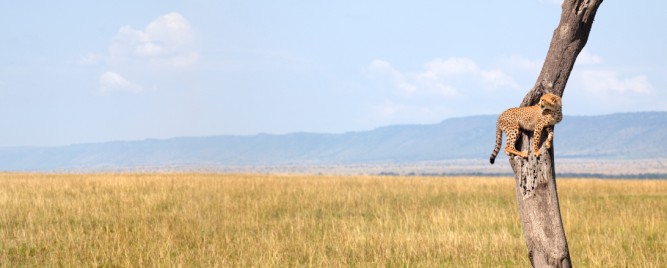
Cheetahs are diurnal hunters, unlike other cats that hunt at night, which lowers the level of competition for food. A common misconception is the belief that cheetahs are poor hunters because they often lose their prey, but in fact, they will voluntarily abandon their prey if they feel disturbed or threatened. - iStock
Conflict with farmers, specifically in central Namibia where the largest population of wild cheetahs resides, is a problem that is putting the existence of this cat species in critical danger. Despite being at the bottom of the big carnivore food chain and suffering a lack of genetic variation, cheetahs have maintained a sense of integrity and have certainly earned their spots as specialised hunters and big cats in their own right.
Reference: Cheetah, by Luke Hunter and Dave Hamman
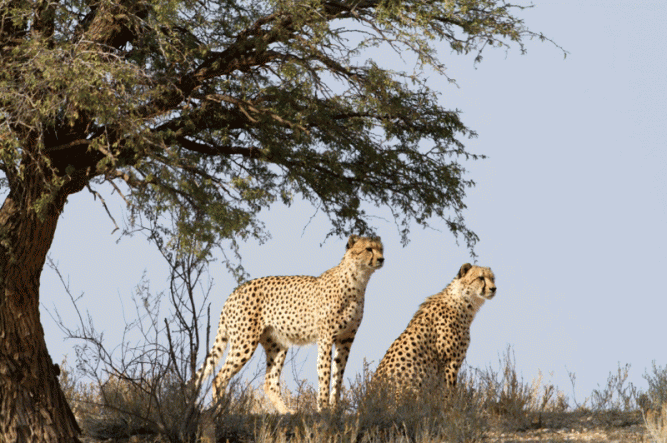
Some of the best places to enjoy cheetah sightings is in the Kgalagadi Transfrontier Park in South Africa, the Okavango Delta near Mombo and Chitabe Camps, and in the Serengeti where the largest protected population of cheetahs roams. - iStock

















